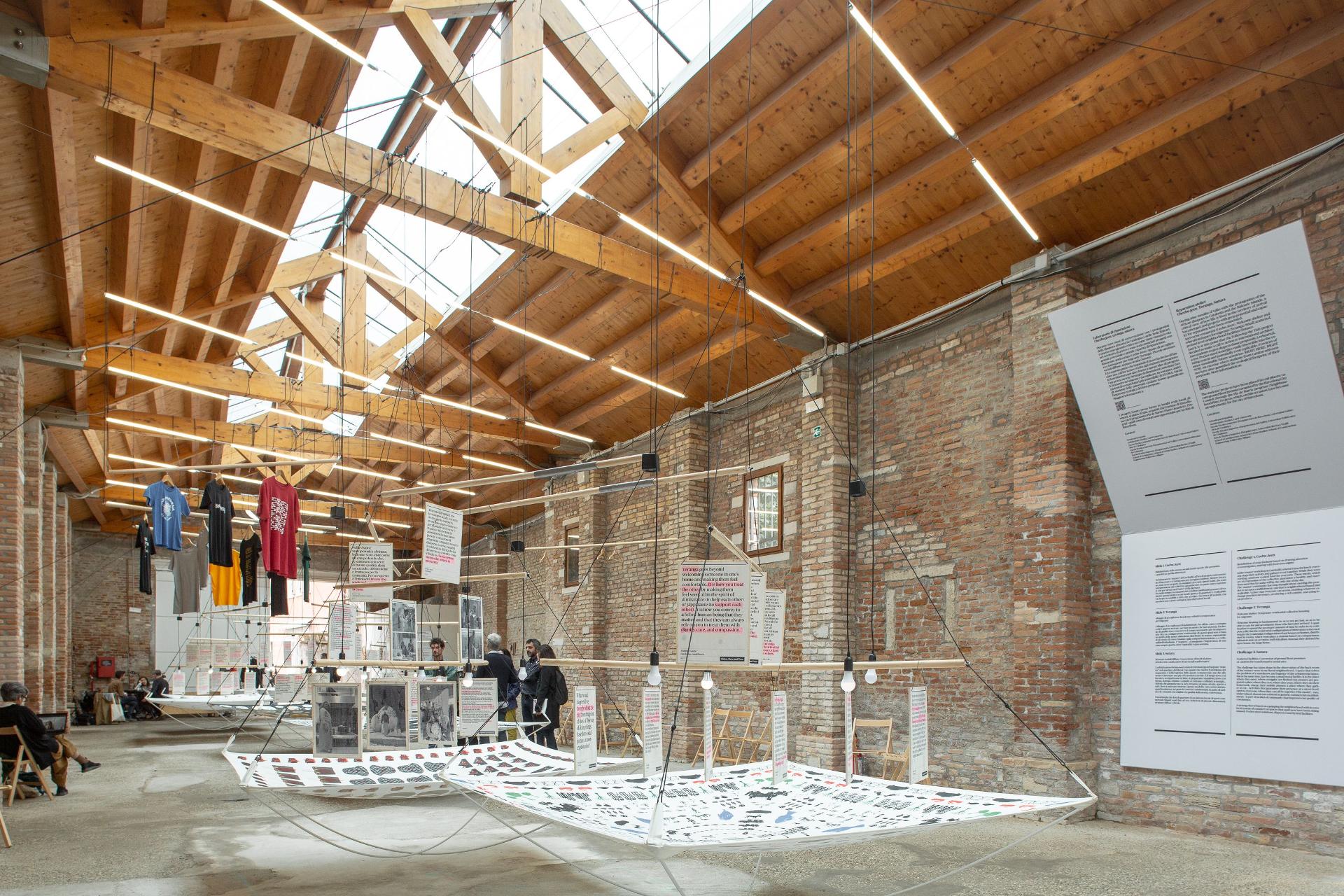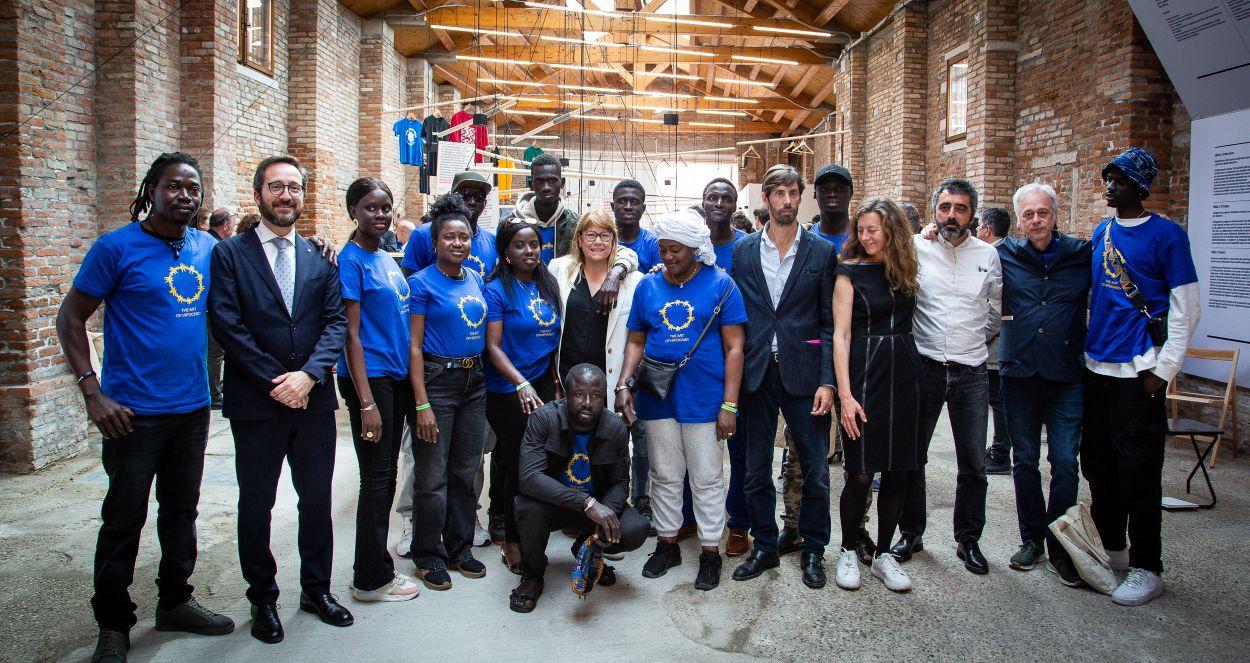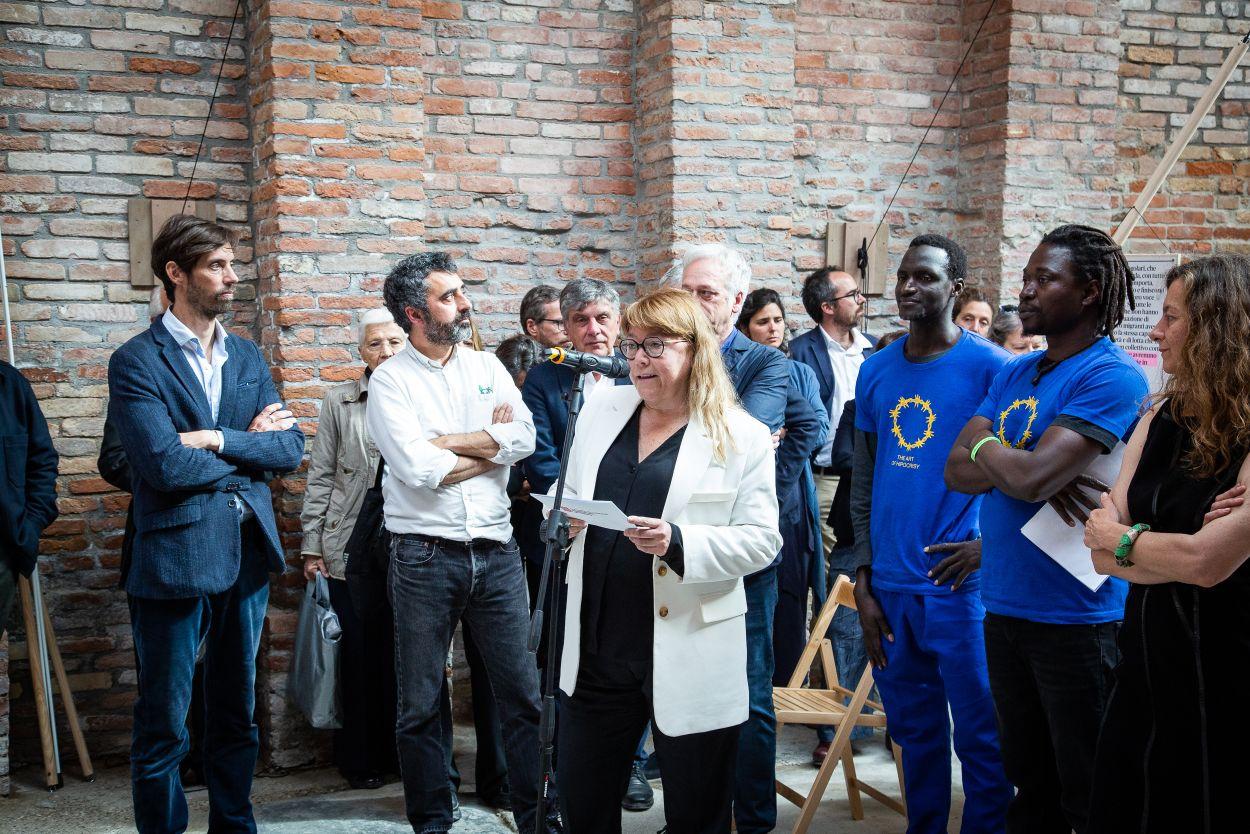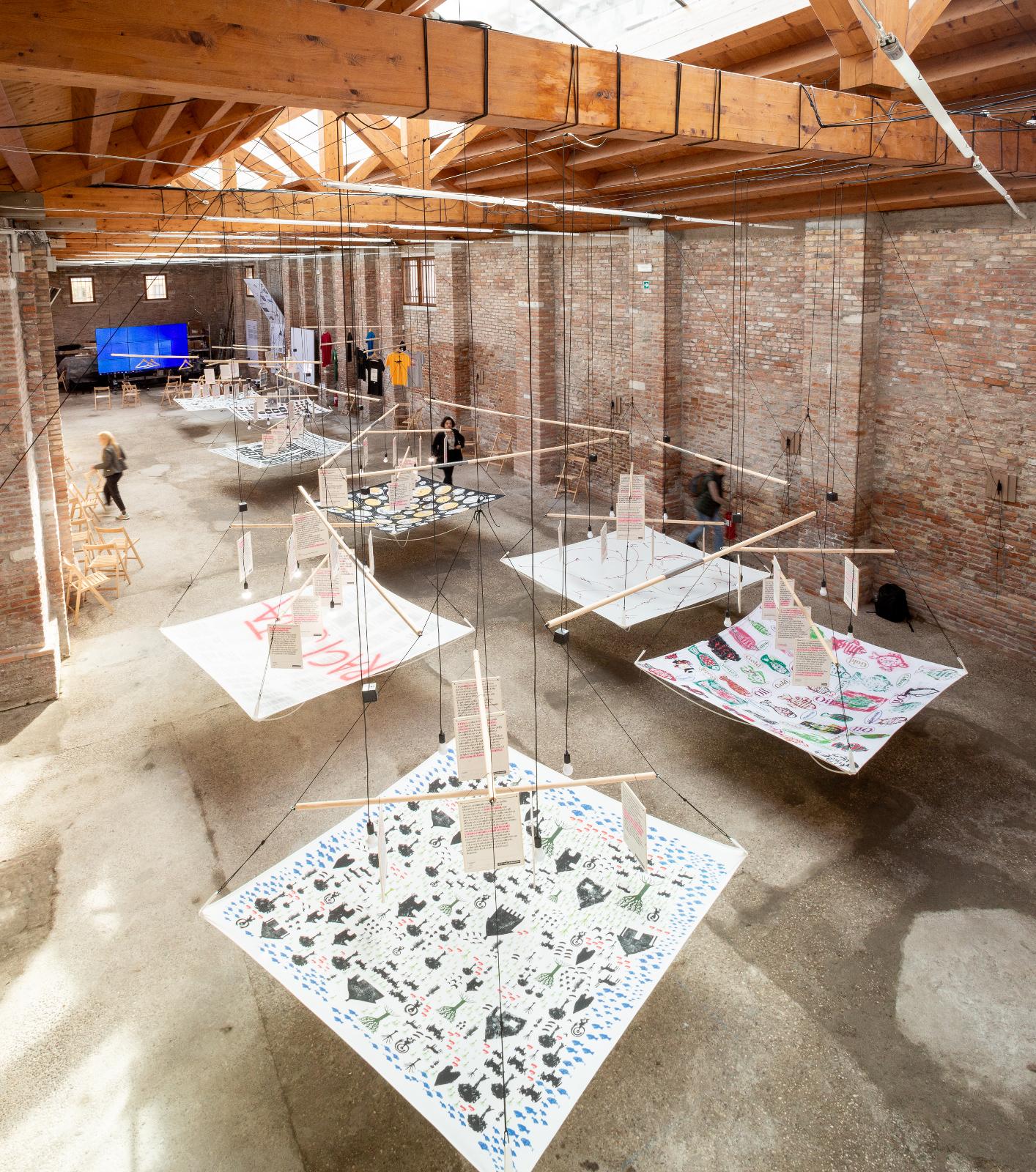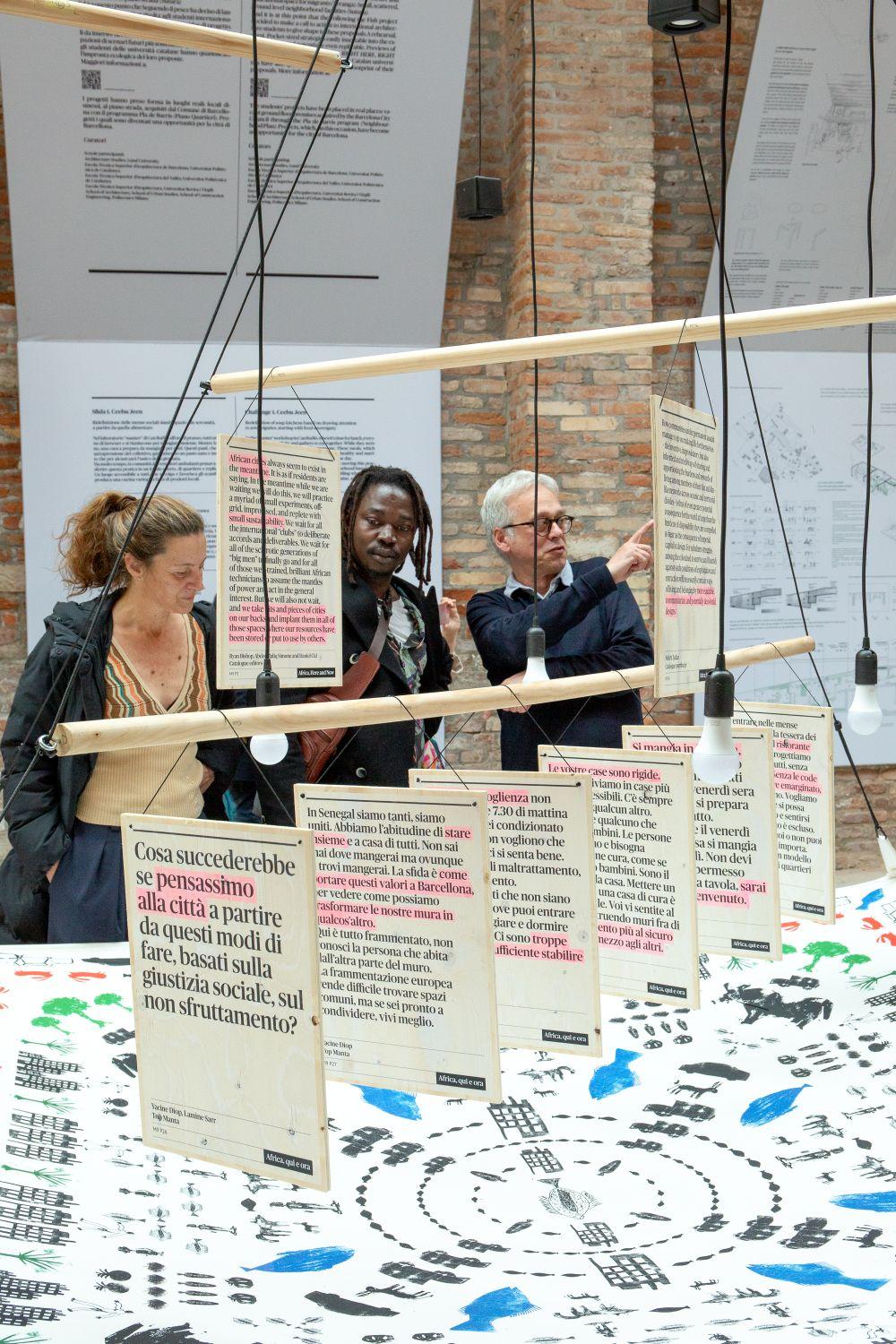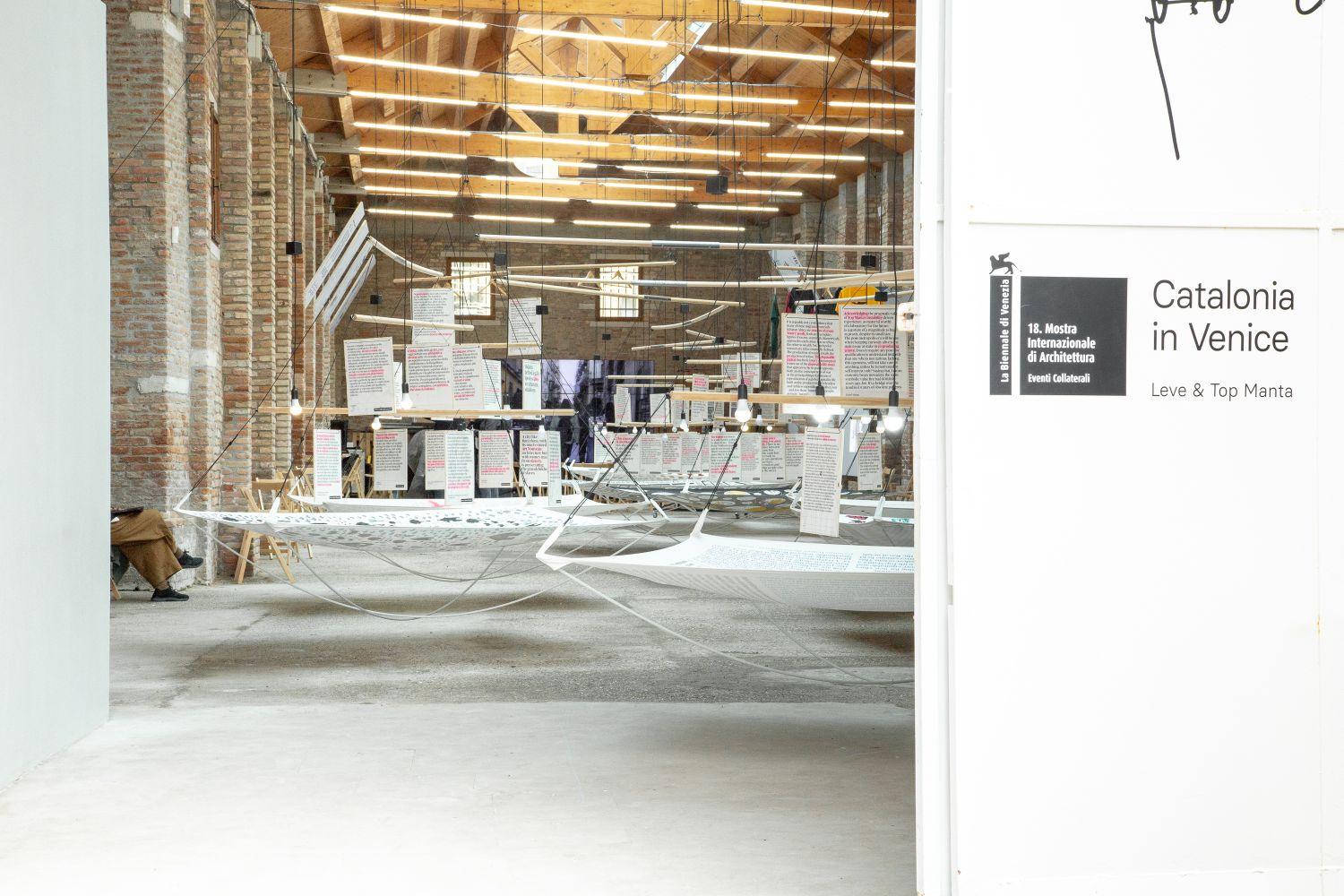On the 18th of May the inauguration of Catalonia in Venice_ Following the Fish (Seguint el peix) took place. The project, curated by Leve in collaboration with Top Manta and produced by the Institut Ramon Llull, can be visited from May to November at the 18th International Architecture Exhibition-La Biennale di Venezia, as part of the Eventi Collaterali.
During the inauguration of the project, Natàlia Garriga, minister of culture, commented that ‘at a time in which we are questioning issues such as sustainability, the climate, or other ways of living, it is very interesting to turn our gaze to Africa once more, to listen and above all to learn about the communities in our midst. This proposal challenges you, provokes you, and makes you think.’ Pere Almeda, director of the Institut Ramon Llull, noted that ‘Catalan culture is being presented at the Venice Biennale di Archittetura through a content-rich, multi-layered project that represents the far right’s return to xenophobic discourse that is present in many countries, as is now the case in Italy. The project, curated by Leve from the perspective of Top Manta, challenges us and questions dominant paradigms, placing worth in the invaluable knowledge and experiences of the migrant collective and posing new questions about architecture and urban spaces.’
Leve, the team of Catalan architects formed by Daniel Cid, Eva Serrats and Francesc Pla, has curated Following the Fish, a project that proposes new residential models based on the community, such as communal kitchens, new spaces of welcoming and the re-use of empty properties. These models all come from the perspective of the African diaspora in Catalonia, with the objective of identifying alternative architecture to hegemonic forms. Daniel Cid has highlighted that ‘this is a rehearsal of how we can change the conditions of architecture from an African perspective in order to create spaces that are welcoming and relational that encourage connections between individuals and communities'.
On their part, Lamine Sarr and Abdulay Seck, spokespeople of Top Manta, have stressed that giving spaces to black people is an act of social justice that forms part of the path towards the construction of a society that is truly anti-racist. Sarr has commented that ‘Following the Fish explains the systemic violence that we suffer as people who migrate from the Global South to Europe. European states have been colonising and exploiting our lands for quite a few years. When this exploitation suffocates us and we try to migrate, safe and legal methods of doing so are denied us and we are launched into the sea or pushed against the wire fences of Ceuta and Melilla. The same states that deny us life organise a Biennale that values the power of interculturality and inclusion.’
This year the main topic of the Biennale di Architettura chosen by the curator Lesley Lokko is ‘The Laboratory of the Future’, with Africa as its protagonist and with the challenges of decolonisation and decarbonisation as its main focus.
The project, that can be visited in Venice until November has two main spaces: the Manter Market, the exposition that gathers narratives of the African migrant diaspora in Catalunya through an installation made up of sheets that are picked up and raised in a selective manner, reflecting the action the manters (informal vendors) carry out when they have to pick up their sheets from the street to escape police persecution, and the laboratory named The Reparation Atelier, where with the participation of students from various international architecture and design schools new residential models based on the community are proposed, such as communal kitchens, new spaces of welcoming and the re-use of empty properties.
Apart from the inauguration, other important dates related with the exposition that will take place in the Italian city are a migrant encounter and exchange of experiences between La Casa di Amadou (a hosting project in the broadest sense of the term for young migrants in Venice) and Top Manta, which will take place in the morning of the 20th of May in the exhibition space, and a workshop from the 3th to the 7th of July with the participation of students from various international schools of architecture and design, among them the Escola Tècnica Superior d’Arquitectura of Vallès (ETSAV-UPC), Barcelona (ETSAB-UPC) and Reus (ETSA-URV), la Lund University and the Politecnico of Milan which will conclude the Reparation Atelier that began in February.
+ info: https://www.llull.cat/monografics/fish/english/index.cfm

